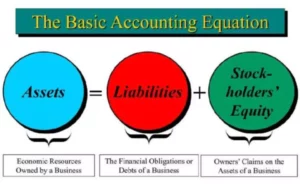In the previous articles, we have come to know who Enrolled Agents are and what they do in essence. Today, let us have a nice run of procedures of taking the Special Enrollment Exam’s process and its nature.
Agents get their enrollment once they pass the Special Enrollment Examination. To be a certified tax preparer and represent individuals and businesses before the IRS, the special examination is one of the two ways to get the status.
Now let us get into the business and delve on the Special Enrolment Examination thick of things. Each section of the succeeding parts of the articles will feature basic questions that need to be answered to understand everything about the SEE.
The Special Enrollment Examination, basically known as SEE, is a three-fold test administered by Prometric on behalf of the Internal Revenue Service (IRS) for aspiring agents.
The IRS administered the enrolled agent exam until 2005 when it selected the Thomson Prometric as the seller of the test. The computerized format was introduced to the test-takers in 2006 and administered. The exam questions have been concealed from the public since then.
The examination was explicitly redesigned to demonstrate technical competence in tax matters and efficiently represent taxpayers before the revenue service.
What is on the Special Enrollment Examination?
The SEE or the special exam for the agents has three parts. Each part has 100 items of multiple-choice questions. The three examination parts are taken separately and have three and a half hours to answer each piece.
Moreover, the agent exam is divided into these parts:
Individuals, (2) Businesses, (3) Representation, Practice, and Procedure
Test items in the special exam may be in direct questions, complete the sentence format and all of the following except expressions. Just like a typical exam, the SEE contains four options to choose from.
What is the passing Rate for the enrolled agent exam?
No exact passing rate is set by the Prometric to pass the test. The examination, however, is graded on a scale of 40-130 points. You need to get a score of 105 for each part to pass the enrollment examination.
When test-takers passed one part of the exam, they may carry over their passing rate for that particular part for up to two years from the date of passing that part. Hence, the time starts running as soon the first part is moved to complete the remaining parts. Crediting the carry-over passing rate for the particular part of the tests will expire after two years.
How do I take the Special Enrollment Exam?
Follow the step-by-step process in securing your examination registration.
1. Sign up for the exam online thru the IRS website Signing up thru IRS means creating your online account by filling in your personal information and filling out the application form
2. Obtain a Preparer Tax Identification NumberAfter completing your online application, you will obtain your PTIN.
3. Schedule your examination date When you have your PTIN, you can now book an EA exam testing appointment to the Prometric IRS Page.
What can help me prepare for the SEE?
In all undertakings, preparation is always the key to accomplish them. To prepare for the special enrollment exam for the agents, enrolling in review classes is definitely of good help to prepare you for the battle.
Attending a review course is an opportunity for you to get access to materials and resources that will help you ace the test. Only that, you need to pick and choose the documents that you will purchase because not all materials available are up-to-date and do not contain more relevant content or topics.
The soundest idea about acquiring review materials would be checking the Topics Specification List available in the IRS. Yes, there is a list of topics for each part of the exam which is occasionally being updated and demonstrate how to become an enrolled agent.
What are the must-know SEE tips?
This portion will help you gain practical tips before, during, and after taking the Special Enrollment Exam. It will be divided into three parts to help you better picture things out to have a seamless exam experience.
Before SEE: Eyes on the prize – never lose sight of your goal, which is to pass the test by demonstrating a certain level of competence required to be a certified agent representing taxpayers before the IRS. That being said, you have to. Toe the line – do what are supposed to do. Follow your study plan. Do the necessary steps to be able to prepare yourself well for the big day. Practice makes perfect – taking a practice test will give you the test environment feels that you need to overcome during the exam day. Evaluate yourself about how you fared during this practice test and make the proper adjustments during the actual test.
During SEE:
The early bird catches the worm – Arriving at least thirty minutes before your scheduled time of the exam will give you ample time to be familiar with the computerized exam and whatnots. Have an ace up your sleeve – if you are deciding which part of the test to take first, well the Prometric has disclosed the passing rate for each part of the exam. To spill the beans, Part 3 will be the hardest to pass as it requires 88% as the passing rate (72% for Part 1 and 57% for Part 2) which means, take Part 3 first if you wish to get the hardest part of the test ahead of the relatively more comfortable parts. Be still my beating heart – never get daunted with “advanced topics” plot twist during the test. The thing is, the primary topics regarding tax preparation have not changed; only the format of the test has been twisted. Get your focus, and plunge to those advanced topics-filled questions with confidence.
After SEE:
You win some, and you lose some – After taking the exam, you will immediately know whether you passed or failed the test, no prolonging the agony. Once you get a score for the test, it means that you failed the test with your score playing between 40 and 104, while a notification stating that you passed the test will appear if you are a successful candidate. Also-ran – If you are one of the hapless candidates who ended up as an also-ran or an unsuccessful candidate, you don’t have to be too hard on yourself but immediately dress up for success, go back to the drawing board, and review with more diligence to be ready for the next schedule of exam. Nothing succeeds like success – passing the part of the test you took first would give you the confidence to ace the succeeding sections. The best way to start the three-fold test is to ace is the first.
What if…?
Let’s take some possible scenarios after receiving the special enrollment exam together with the corresponding actions that you must consider.
If you failed one part of the test…
Not much of a problem as you only have to schedule your retake of that part after 24 hours.If you passed all parts of the exam…
Congratulations! You are just a few steps away to earning your EA status. You now need to:
- Submit an application for Enrollment (known as Form 23).
- Pay for the enrollment fee.
- Wait for the approval within three months, including the background check about your tax activities.
Is the EA exam similar to the CPA exam?
The EA exam is way different from the CPA exam. For one, the EA exam is only composed of three parts, while the accounting exam has four parts. That being said, the CPA exam is relatively longer than the enrollment exam. Moreover, the scope of the CPA test is much broader than that of the agents’ test.
While the agent exam covers tax law and procedures, the accounting exam also has a good portion of one of the parts of the agent exam. The taxation part of the accounting test overlaps with that of the agent test.
What is the truth behind the agent exam?
The Special Enrollment Examination is usually mistaken to be about tax preparations and creating tax returns. To set the record straight, the examination for the agents is designed to test the examiner’s knowledge of the tax code and procedures in the Internal Revenue Service.
To become a successful examinee, turn yourself to be a detail-oriented person as you will deal with details about taxation. Choosing the right review course will also matter to help you become a prepared test-taker and eventually, a successful examiner.
After all, the exam is to test your tax knowledge. If you have not made up your mind to take the test and the fear of failure comes creeping in, remember this: failure is never the opposite of success; it’s part of success.

















